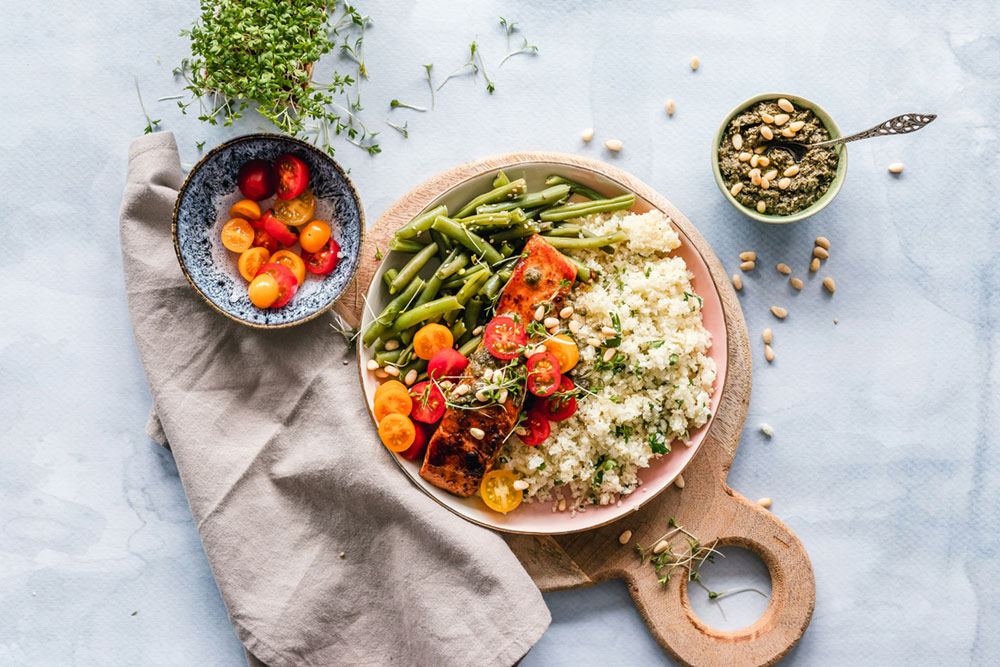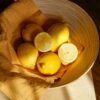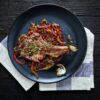Brining Basics
Brining is simply the technique of submerging meat, fish, or vegetables into a salty and often times flavored solution. Brining is an easy way to add additional moisture to leaner cuts of meat that can tend to dry out during cooking. Brining works best with meats that are naturally mild-flavored such as chicken, turkey and pork loin.
Two things happen during brining: salt alters the protein structure in the meat allowing the meat to absorb and retain more moisture and secondly, it seasons internally, not just topically.
Brining Steps:
After you choose your meat or whatever it is you’re brining, you’ll then need a suitable food-safe container that will fit the meat comfortably and that will also fit in the refrigerator.
Next you’ll need to ascertain how much brine to make to fully submerge the meat.
To determine this, place your meat (from a chicken breast to a whole turkey) in the container and pour enough water over to submerge the meat. Be sure to keep track of the amount of water you use. This is the total amount of water you will need to make the brine. Discard this water and begin your brine.
Brine:
Sea salt or Kosher Salt work well. Measure by weight as various salts weigh differently. 2 tablespoons of ‘regular’ table salt will weigh about 30 grams, while kosher salt will weigh less, therefore you will need more kosher salt to get to 30 grams.
- 2 tablespoons or 30 grams of salt per liter or quart of water will produce a light brine.
- 5 tablespoons of salt per liter of water will be more flavorful and will take less time to brine.
Start with lower salt solutions when you are first learning to brine.
How you do it….
Place ¼ of the liquid in a pan, add salt and bring to a boil. Stir to dissolve. Add aromatics (see below), if desired, and then bring to a simmer for 5 minutes. Turn off heat, cover and let steep for 30 minutes. Cool completely in frig for safety!
Place in the food-safe container, and then add the meat. Weigh the meat down if necessary so it stays submerged. You will need about 1 hour per pound of meat. Lower salt brines or larger pieces of meat can take longer-even overnight.
Remember when brining small pieces of meat, don’t brine for the total weight, but for the individual size. In other words, if you have two-2 pound pork loins, you would brine for 2 pounds and not for 4 pounds.
After the time is up, remove from liquid. Discard brine-it cannot be saved. Rinse meat, if desired, then pat dry, even inside if you’re using a whole chicken or turkey, this will allow the meat to brown better during cooking.
Brined meats can cook faster, so check meat sooner than you normally would.
If you want to try brining a turkey for the holidays, you might want to practice first. This recipe is for a 14 pound thawed turkey.
Brine:
1 cup kosher salt
½ cup brown sugar
1 gallon water
1 ½ tablespoons black peppercorns
1 teaspoon allspice berries
In a large stockpot, bring these ingredients to a boil over medium-high heat, stirring occasionally. Remove from heat, cool to room temperature, then refrigerate.
The next day, combine the brine and 1 more gallon of water in your food-safe container that will fit your turkey in the refrigerator. Place the turkey in the container, weigh down if necessary, cover and refrigerate for about 10 hours.
Preheat oven to 450 degrees.
Remove the turkey from the brine, rinse and pat dry, including inside the bird. Stuff the inside of the bird with one apple, sliced; ½ yellow onion, sliced; and a sprig of rosemary, 5 sage leaves and a few sprigs of parsley. Rub the outside of the turkey with butter or ghee and place on a roasting rack in a roasting pan. Roast for 30 minutes, reduce oven temperature to 350 degrees and roast until a thermometer placed in the thickest part of the breast reaches 165 degrees. This will take about 2 ½ hours.
Let turkey rest for 20-30 minutes before slicing.
Additional Tips:
If you like, try infusing additional flavors into your brine. Sugar, molasses or maple syrup can be added but generally you don’t use more sugar than salt.
Try adding aromatics such as onions, garlic, bay leaves, peppercorns, thyme and juniper berries. For an Asian flavor use ginger, lemongrass, Kafir limes leaves, and star anise
Beer, or cider can be substituted for all or part of the water for additional depth of flavor.















